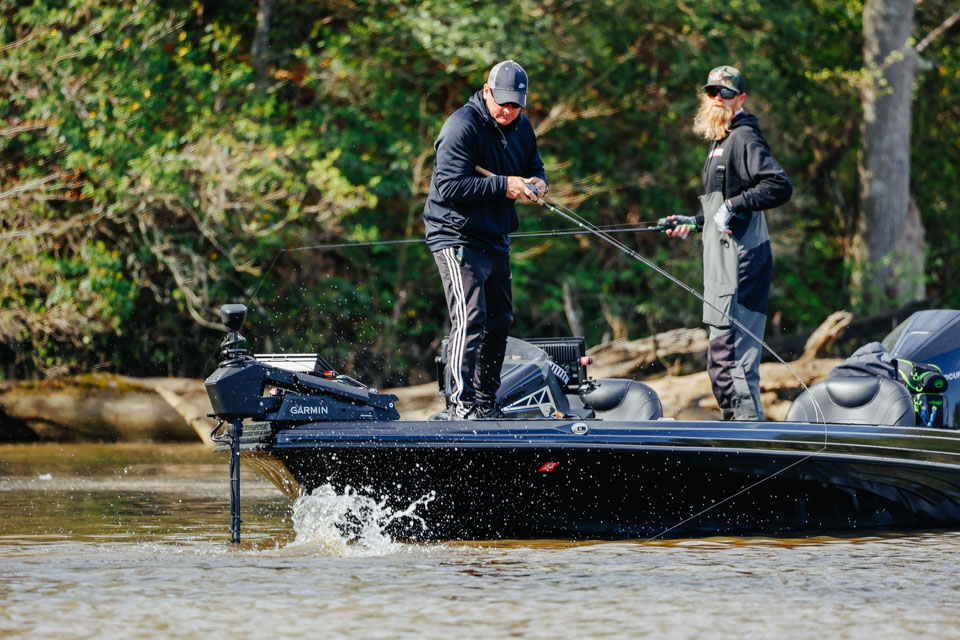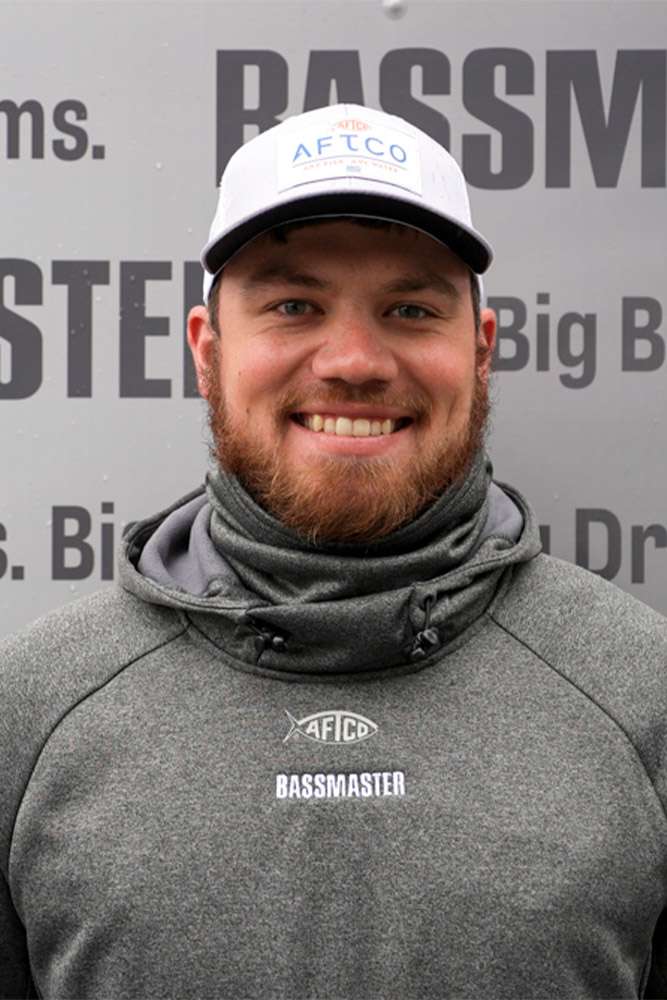
RICHMOND, Va– Being able to evaluate conditions as they are changing is an important part of any tournament. But that has become especially critical during the St. Croix Bassmaster Northern Open at James River presented by Mossy Oak Fishing, where a greatly fluctuating tide has mixed with warming water temperatures and bass wanting to spawn.
Every bass becomes a clue on how to target the next one and simple, small adjustments can be the difference between a good bag and a great bag.
For instance, tournament leader Alex Wetherell (25 pounds, 9 ounces) said he noticed a lot of anglers in his area have been fishing quickly and he has learned to slow down and pick apart areas methodically and thoroughly.
“As windy as it was, I would just put my Minn Kota Raptors down, fancast an area and really work it through,” he said. “Having a couple of big fish early settled me down and allowed me to work thoroughly and that gave me some of those key bites.”
Third-place angler Joey Murphy shared the same mindset, saying slowing down gives him an advantage in highly pressurized areas and helped him land a 22-3 limit.
“It is a big system but it fishes very small,” Murphy said. “A lot of people are in and out and it seemed like the more methodical you could be the better off you were. I almost call it like Florida fishing because you have to creep along.”
Here are some other key takeaways anglers have gathered from practice as well as Day 1.
Brad Leuthner (2nd-place, 22-4)
Leuthner started last year’s Opens schedule Top 10 in the overall points and had a chance to make a run at an Elite Series bid. But the Minnesota native struggled at the James River and finished 70th, effectively ending his chances at making the 2022 Elite Series roster.
This year, Leuthner was determined to not let the James River stump him again and he spent two weeks practicing the tidal fishery, knowing also the final Northern Open will be on another tidal fishery in the Upper Chesapeake Bay. The practice has paid off so far with a second-place showing on Day 1 and he has a primary pattern and a back-up pattern he hasn’t even fished yet.
“I have fished every creek from the ocean to the dam up here in Richmond,” he said. “Normally I don’t prefish that much. I had a poor tournament at Cherokee and last year, this tournament cost me the Elites. The Northerns are going back to a tidal fishery for the last one, so I figured the more time I can spend on tidal water the better. It is really fun and you know there is a certain time they are going to bite every day.”
John Soukup (4th-place, 21-9)
During his practice period, Soukup could get bites easily but struggled to find the big bites he was looking for. That changed on Day 1 when he landed several big largemouth to land inside the Top 5.
Time management and nifty driving was a key to his success on Day 1.
“As practice progressed, I was thinking ‘New areas, new areas, new areas,’ and I never came across an area with big fish. I kind of figured out what the fish were doing and when I had a low draw, I wanted to maximize my time. I went to an area I just idled through and never made a cast in and it was a slow start, then all of sudden the big ones started coming. There are a lot of boats in there and I don’t know if there will be any left (on Day 2),” Soukup said. “I beat some people into an area because I ran some stuff other people wouldn’t and it gave me an hour and then people started funneling in. I’ve smoked logs, I don’t know how my lower unit is left. There is no paint left at all on that thing.”
Garrett Paquette (17th-place, 17-2)
With bass moving quickly and often this week, the Michigan native analyzed every bite in practice to establish two distinct patterns.
“Not that I had a great practice, but by looking at the bass and analyzing them you were able to tell if a fish was spawning the way its fins were and if it had red marks on the side,” Paquette said. “You could tell if a fish was prespawn judging by the belly and how fat they are. How white they are. Paying attention to the bass was important to figuring out what stage of the spawn it was in.”
Darold Gleason (23rd-place, 16-10)
Gleason’s tidal water experience is limited, so when he arrived at the James River he decided to keep things as simple as possible and it has put him in position to cut a check and potentially jump into the cut if he can improve on Day 2.
His Lowrance Active Target sonar has played a big role in his success as well.
“There was a ton of dead water in my practice period,” the Many, La. native said. “So what I learned was to be very thorough when I saw some activity on my Active Target.
“I don’t have a lot of experience with tidal water, so I did a tidal 101, real simple (approach),” he continued. “When it is low I’m fishing one structure and when it is high I’m fishing another structure. Just as bare bones simple as I can do it because I don’t understand it thoroughly, so I thought by dumbing it down it would allow me to focus. I’m fishing what is in front of me based on the tide. I was blessed with quality bites today that I didn’t see in practice.
Hunter Sales (41st-place, 15-1)
The Carson-Newman head coach is one of many anglers in the 15-pound range after Day 1 and has put himself in position for a great finish if he can keep the momentum going on Day 2. This is his first experience on a tidal fishery, but he has been able to relate the constantly fluctuating water with what happens on his home lakes of Cherokee and Douglas.
“This is my first time ever fishing tidal waters, so I tried to relate it to the rising and falling water on Cherokee and Douglas,” Sales said. “So I learned how fish position when the water is changing. You almost have to think of this place like two different river systems. Current flows one way and then turns around and goes the other way. That creates different eddies and things like that. I tried to find a couple of current break areas to catch those prespawn bass and then I flipped cypress trees. I caught a mixture of prespawn and spawners on those.”






